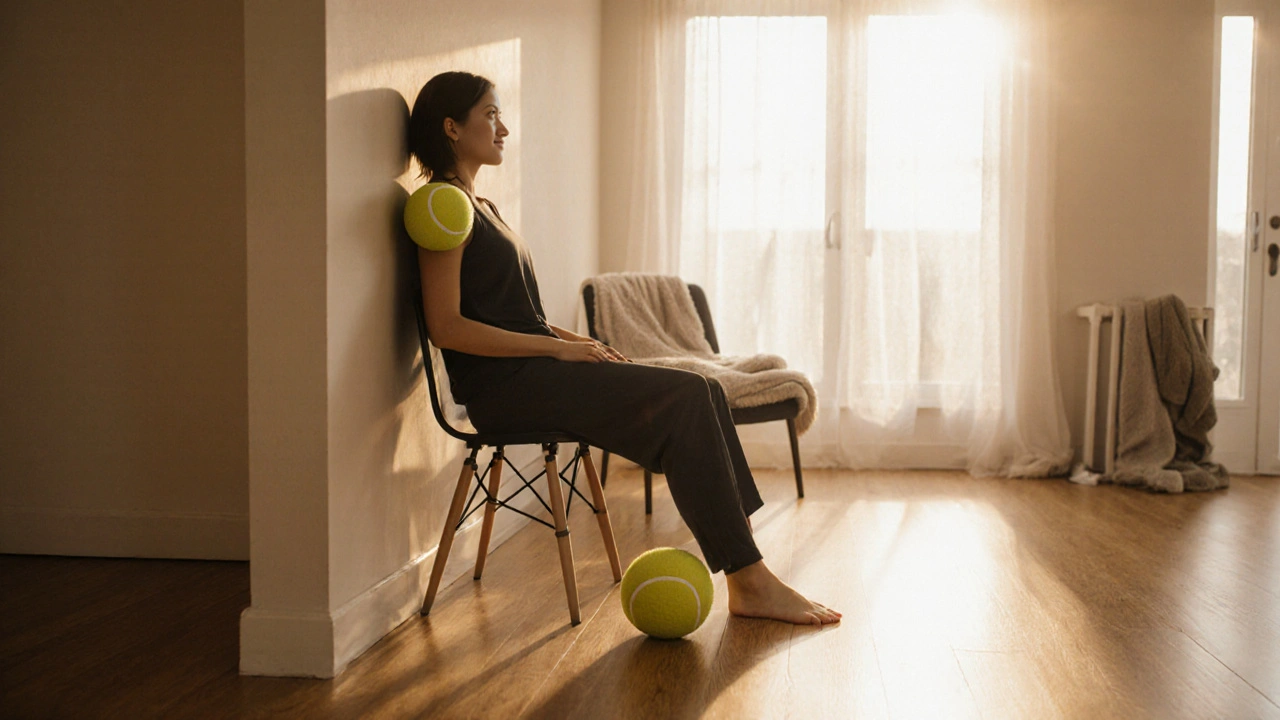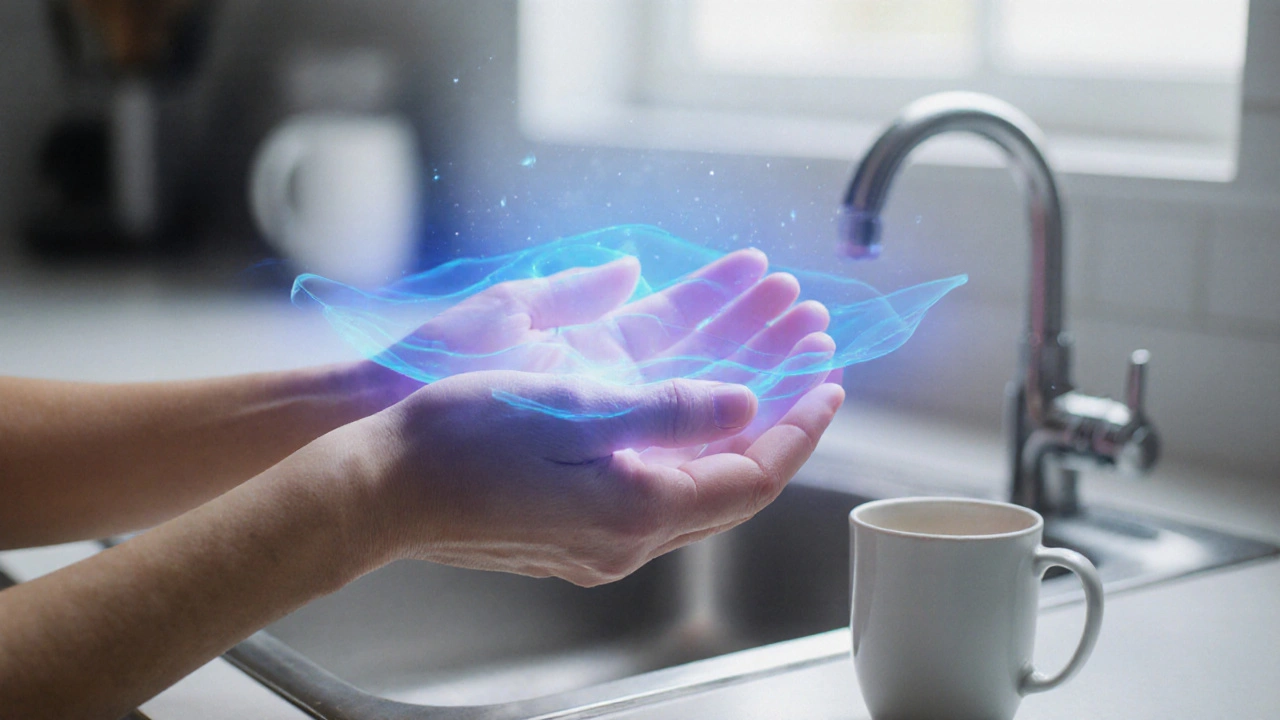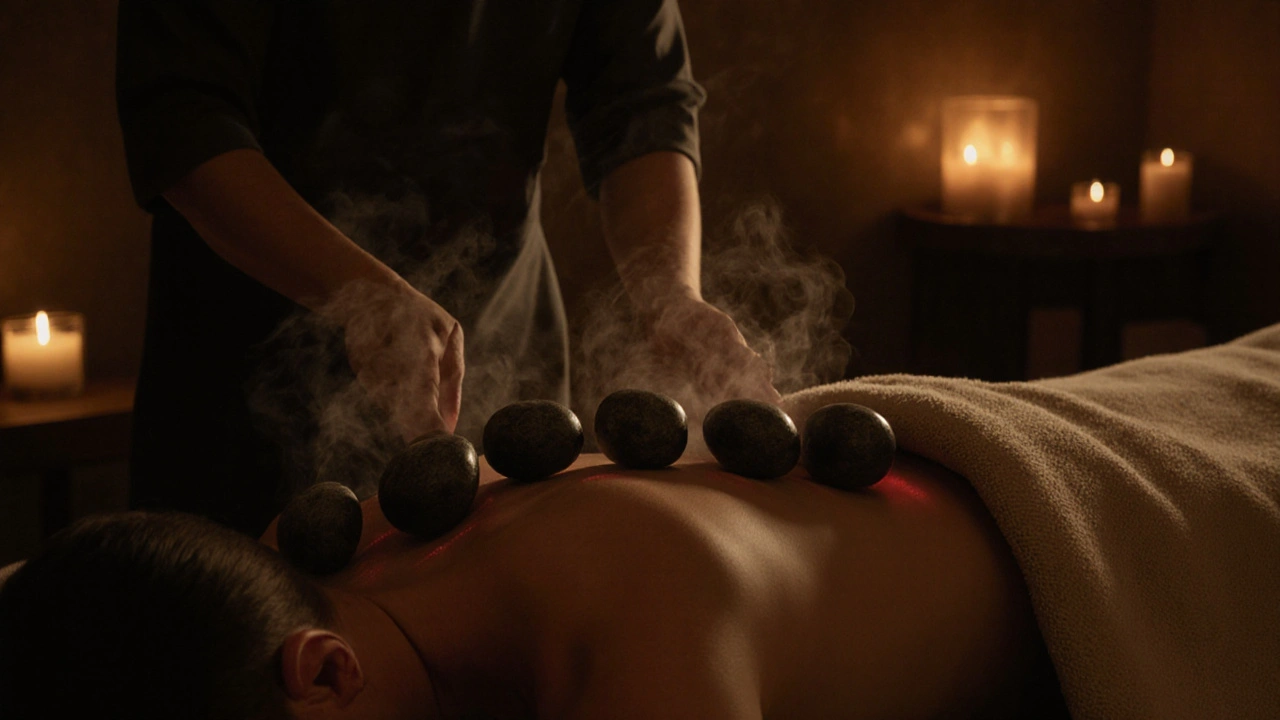Massage Therapist Approved: DIY Techniques for At-Home Relaxation

Feeling tense after a long day? You don’t need a spa appointment to reset your body and mind. Millions of people use simple, hands-on techniques every night to melt away stress-techniques that licensed massage therapists actually recommend. No fancy tools, no expensive oils, just your hands and a few minutes of focused attention.
Why At-Home Massage Works Better Than You Think
Massage isn’t just about feeling good. It’s about signaling your nervous system to shift out of fight-or-flight mode. When you press into tight muscles, you trigger mechanoreceptors that tell your brain: “It’s safe to relax now.” This lowers cortisol, slows your heart rate, and eases muscle tension. Studies show even five minutes of self-massage daily can reduce perceived stress by up to 40% over four weeks.
Professional therapists use pressure, rhythm, and timing to get results. But you don’t need their training to activate the same relaxation response. The key is consistency-not intensity. A gentle, steady touch for five minutes beats a 20-minute session that leaves you sore.
Three Essential Techniques (Start Here)
These three methods are used by therapists with clients who can’t make regular appointments. They’re safe, effective, and require zero equipment.
- Scalp Massage - Sit or lie down. Use your fingertips (not nails) to make small circles across your scalp. Start at the forehead, move back to the crown, then down to the nape. Apply light pressure-like you’re gently washing your hair. Do this for three minutes. It’s especially helpful if you get headaches from screen time or clenching your jaw.
- Neck and Shoulder Release - Tilt your head slightly to one side. Use the thumb and fingers of your opposite hand to pinch the muscle between your ear and shoulder. Slowly roll it between your fingers, like you’re kneading dough. Don’t press hard. Just enough to feel a soft release. Repeat on the other side. Do this for two minutes per side.
- Hand and Wrist Relief - Hold one hand palm-up. Use your other hand to gently pull each finger away from the palm, one at a time. Then, press your thumb into the fleshy part below your thumb (the thenar eminence) and make small circles. This helps if you type all day or carry heavy bags.
What to Avoid (Even If It Feels Good)
Some people think deeper pressure = better results. That’s not true. Pressing too hard on your neck, spine, or joints can irritate nerves or cause bruising. You should never feel sharp pain, tingling, or numbness. If you do, stop immediately.
Also skip these common mistakes:
- Rolling a tennis ball under your foot if you have plantar fasciitis-this can make it worse without proper guidance.
- Massaging directly over swollen areas, bruises, or recent injuries.
- Using oils or lotions that make your skin slippery if you’re not stable on the floor or chair.
Therapists often say: “If it hurts, it’s not helping.” Relaxation is the goal, not punishment.

Build a Routine That Sticks
Most people try self-massage once, feel good, then forget about it. To make it last, tie it to something you already do.
Here’s how real people do it:
- Do scalp massage while brushing your teeth in the morning.
- Stretch your neck and shoulders during your coffee break.
- Use hand massage right after washing dishes-your hands are already warm.
- Lie on the floor with a foam roller under your upper back for three minutes before bed.
Set a phone reminder for 5:30 p.m. every day. That’s when stress peaks for most people. Make it non-negotiable. After two weeks, you’ll notice you’re less irritable, sleep deeper, and don’t reach for caffeine as often.
Tools That Actually Help (Skip the Hype)
You don’t need a $200 massage gun. But a few low-cost tools can make self-massage easier:
- A tennis ball - Roll it under your foot or between your shoulder blades while leaning against a wall. Not for the lower back.
- A foam roller - Use it for your calves, thighs, or upper back. Avoid rolling your spine.
- A wooden massage stick - Great for calves and arms. Costs less than $15 online.
- Warm towels - Microwave a damp towel for 20 seconds and lay it over tight shoulders. Heat increases blood flow and makes tissue more pliable.
Therapists rarely recommend vibrating massagers for beginners. They can mask pain signals and lead to overuse. Stick to manual pressure until you know your body’s limits.
When to See a Professional
Self-massage is powerful-but it’s not a cure-all. See a licensed massage therapist if you have:
- Constant pain that doesn’t improve after three days of self-care
- Numbness or tingling that spreads down your arm or leg
- Swelling, redness, or warmth in a joint or muscle
- A history of osteoporosis, blood clots, or recent surgery
These aren’t red flags you should ignore. A therapist can identify if your tension is coming from posture, stress, or something deeper-like a pinched nerve or muscle imbalance.

Real Results from Real People
One client, a 52-year-old teacher, started doing 5-minute hand and neck massages every night after grading papers. After six weeks, she stopped taking ibuprofen for tension headaches. Another, a 34-year-old software developer, began rolling his calves with a tennis ball before bed. His nighttime leg cramps disappeared within a month.
These aren’t miracles. They’re results of consistent, gentle pressure applied with awareness. You don’t need to be an expert. You just need to show up.
Final Tip: Breathe While You Massage
Most people hold their breath when they press into tight spots. That locks tension in. Instead, inhale through your nose, and as you exhale slowly through your mouth, press a little deeper. Let your breath guide your pressure. It turns massage from a chore into a meditation.
Try it tonight. Sit in a quiet spot. Close your eyes. Place your hands on your shoulders. Breathe. Press gently. Let go.
Can I use oil or lotion for at-home massage?
Yes, but only if you’re sitting or lying in a safe spot where you won’t slip. Use a small amount of unscented lotion or coconut oil. Avoid heavy oils like olive oil-they can clog pores and feel greasy. Scented oils are fine if you like them, but skip them if you’re sensitive to smells.
How long should I spend on each area?
Three to five minutes per area is enough. Longer doesn’t mean better. Your nervous system responds best to short, focused sessions. If you’re short on time, pick one area-like your neck or hands-and do that well.
Is self-massage safe during pregnancy?
Yes, with a few precautions. Avoid deep pressure on the abdomen and lower back. Stick to gentle strokes on the shoulders, feet, and hands. If you’re in your first trimester or have high-risk pregnancy complications, check with your doctor first. Many prenatal massage therapists recommend foot and scalp massage for relaxation.
Why does my neck crack when I massage it?
That popping sound is gas moving in your joints-it’s harmless if it’s not painful. But don’t force it. If you’re trying to crack your neck to relieve tension, you’re likely overworking small joints that aren’t meant to be moved that way. Focus on massaging the muscles around your neck instead, not the bones.
Can I do this if I have arthritis?
Yes, but be gentle. Avoid direct pressure on inflamed joints. Focus on the muscles surrounding the joint instead. For example, if your hands hurt from arthritis, massage the forearms and wrists-not the knuckles. Warmth helps, so use a warm towel before massaging. Always stop if pain increases.
Next Steps: Make It a Habit
Start small. Pick one technique from this list and do it for five minutes tonight. Don’t worry about doing it perfectly. Just do it. Tomorrow, add another. In a week, you’ll have a mini-routine that fits your life.
At-home massage isn’t a luxury. It’s a basic tool for mental and physical resilience. You wouldn’t skip brushing your teeth. Don’t skip brushing away stress.



